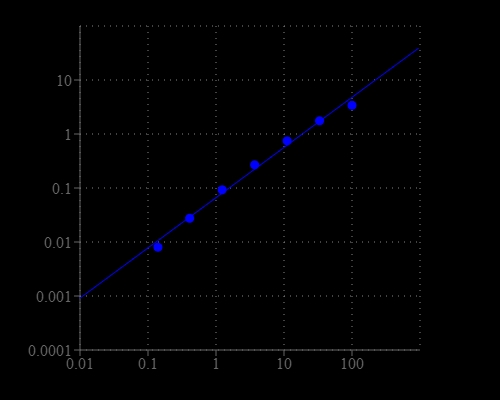Buccutite™ ALP (Alkaline Phosphatase) Antibody Conjugation Kit
Optimized for Labeling 25 ug Protein
Protein-protein conjugations are commonly performed with a bifunctional linker (such as SMCC) having different reactivity at each end for linking two different proteins. One end of the crosslinker reacts (via NHS ester) with amines (-NH2) of lysine and N-terminus, and the other end reacts (via maleimide) with the thiol groups (-SH) of cysteine. However, SMCC-modified protein is extremely unstable and often self-reactive since proteins contain multiple amine and thiol groups that cause significant amount of crosslinkings. In addition, it is quite difficult and tedious to quantify the number of maleimide groups in a protein. Buccutite™ ALP (Alkaline Phosphatase) Antibody Conjugation Kit is designed to rapidly prepare ALP conjugates with pre-activated ALP. The kit is optimized for labeling 25 ug protein. The Buccutite™ FOL-activated ALP readily reacts with Buccutite™ MTA-modified antibody under extremely mild neutral conditions without any catalyst required. Compared with commonly used SMCC and other similar technologies, Buccutite™ bioconjugation system is much more robust and easier to use. It enables faster and quantitative conjugation of biomolecules with higher efficiency and yields.


| Catalog | Size | Price | Quantity |
|---|---|---|---|
| 5512 | 2 Labelings | Price |
Storage, safety and handling
| H-phrase | H303, H313, H333 |
| Hazard symbol | XN |
| Intended use | Research Use Only (RUO) |
| R-phrase | R20, R21, R22 |
| UNSPSC | 12171501 |
Documents
Contact us
| Telephone | |
| Fax | |
| sales@aatbio.com | |
| International | See distributors |
| Bulk request | Inquire |
| Custom size | Inquire |
| Technical Support | Contact us |
| Request quotation | Request |
| Purchase order | Send to sales@aatbio.com |
| Shipping | Standard overnight for United States, inquire for international |
Page updated on December 15, 2025
